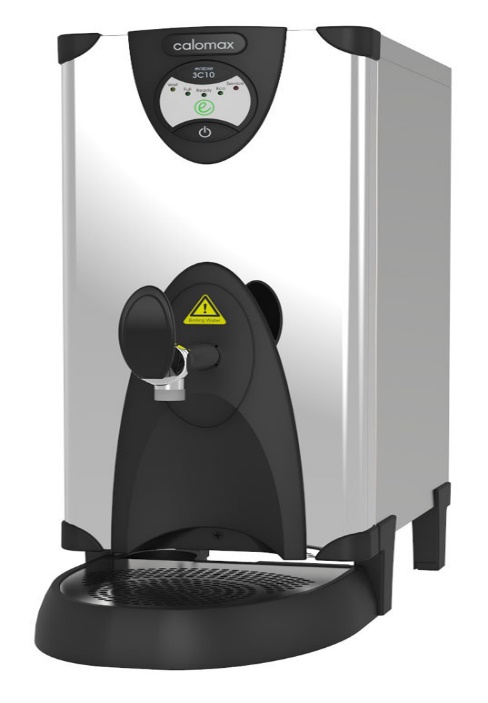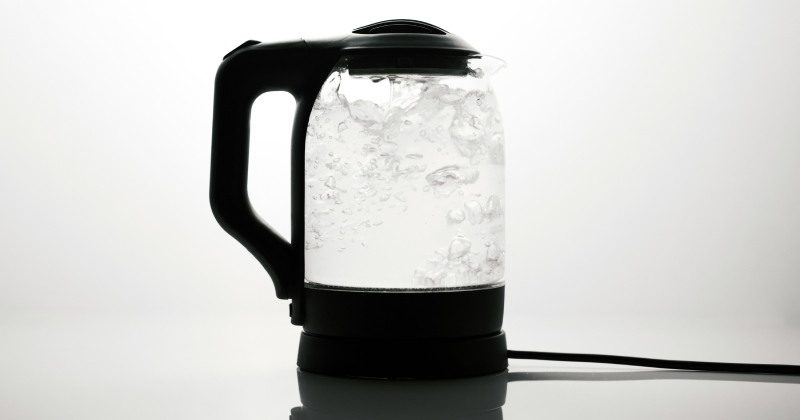
Although they share a purpose, hot water dispensers and kettles are by no means equal. Which is best for you and your workforce depends on a number of key factors.
In this post, we break down the differences between kettles and hot water dispensers to help you find a hot water solution that meets the needs of intended users.
Energy efficiency
One of the most significant differences between kettles and hot water dispensers is energy efficiency.
Boiling a full kettle typically has an energy cost of between 7 and 11 pence, and with multiple boils throughout the day, that can quickly add up. For example, a team of 20 employees, who each consume 3 hot drinks per work day, will need to boil a 5-cup capacity kettle 12 times, meaning…
At 7 pence per boil, you’re spending:
- £0.84 per work day
- £3.36 per work week
- £168 per year
At 11 pence per boil, you’re spending:
- £1.32 per work day
- £6.60 per work week
- £330 per year
For larger workforces or greater use rates, this range rises significantly.
Hot water dispensers, or water boilers as they’re often called, use thermal insulation and advanced heating elements to heat water efficiently. They can serve hot water on demand without the burst of energy required with each kettle boil.
Does a hot water dispenser save electricity?
In order to keep water hot enough for immediate use when required, hot water boilers use small amounts of energy consistently when on. So, despite being a more energy efficient appliance in terms of design, they can become the more expensive option if underused.
Some green models keep this energy burden to a minimum with eco stand-by options and other clever features. In these cases, running costs can be as low as 2 pence per hour, but for very low usage, a kettle will likely be more affordable.
Time efficiency
Time is a crucial factor in busy environments.
A kettle requires you to pick it up, fill it, place it back on the base, and wait for it to boil. For larger quantities of water, this can take several minutes, and if more than a few people are waiting, multiple boils.
According to a survey of 1000 workers, people spend an average of 24 minutes per day fetching and drinking hot drinks. This equates to roughly £400 in lost hours annually, a figure that can be reduced significantly when an instant hot water dispenser is used in place of a kettle.
Hot water dispensers offer immediate hot water at the touch of a button. There are no long wait times for water to boil, and they don’t need to be refilled nearly as often.
Capacity & output
Most kettles hold between 1.5 and 1.7 litres (between 5 and 7 cups depending on cup size and liquid ratios), which can be limiting in busy work settings.
Hot water dispensers typically hold 5 litres plus and can serve well over 100 cups per hour, making them a much more convenient option in high demand spaces.
Consistency
Kettles are designed to bring water to the boil - not keep it there. As soon as the element shuts off, the water begins to cool, meaning temperatures are inconsistent based on how soon water is poured from the kettle after a boil.
For hot water dispensers, on the other hand, consistency is something of a speciality. They can be electronically controlled to serve water at 97 degrees with every use, reducing the chance of subpar brews.
Water quality
Water quality is often overlooked when using a kettle, but it plays a big role in the taste of your hot drinks. Kettles are prone to limescale build-up, especially in areas with hard water. This not only affects the taste of the water but can also shorten the lifespan of your kettle.
Hot water dispensers come equipped with water filtration systems that remove impurities, including limescale, from the water before heating it. This ensures cleaner, better-tasting water for every cup.
For businesses that prioritise offering their staff and visitors high-quality refreshments, the filtering system in hot water dispensers is a major advantage.
Maintenance and longevity
Kettles need to be cleaned and descaled regularly. While this is easily done with store-bought descaling products, it adds an extra task to your to-do list.
In hard water areas, descaling is necessary more frequently, and failure to do so can lead to reduced efficiency and a shorter kettle lifespan.
Hot water dispensers, however, often come with affordable professional maintenance packages. At Cactus Water Systems, for example, we offer four tiers of maintenance options to ensure your dispenser stays in top condition.
A well-maintained hot water dispenser can last many years, while kettles, although cheaper to purchase, will need to be replaced far more frequently.
Operation
Kettles require a fair amount of manual handling — lifting, refilling, and placing them on the base, followed by pressing the switch to boil. While this isn’t a problem for most people, it can be difficult for those with limited mobility or anyone carrying multiple objects.
Hot water dispensers can be much easier to use. With a simple push of a button or activation of a motion sensor, users can get hot water instantly without the need to lift or move anything. This accessibility makes hot water dispensers a more inclusive option for workplaces and public spaces, ensuring everyone can use them safely and easily.
Safety
Hot surfaces, potential for being knocked over, and risk of spilling boiling water make kettles a hazard in busy environments.
Hot water dispensers, by contrast, are designed with safety in mind. The external surfaces are usually insulated to remain cool to the touch, reducing the risk of burns. As larger, heavier units that stay in place during use, dispenser are also less likely to be toppled, making them the safer option.
Should you choose a hot water dispenser or a kettle?
If running costs are your primary concern, choosing between a hot water dispenser and a kettle will depend on how you and your team plan on using it.
For small workforces (sub 10 employees) or use rates, a kettle might end up a more economical choice, but for heavier usage, a hot water dispenser will always be the most cost-efficient option in the long run. However, running costs aren’t the only factor to consider.
Being that hot water dispensers bring several other benefits to the table, such as accessibility, efficiency, and safety, they could well be a better choice for your space even if demand for hot water during the day (or on night shifts) isn’t that high.
Our recommendations
CWS DB2000 Push Button Dispense

This hot water dispenser is ideal for settings where safety is key, like care homes or self-service areas. It allows over 20 electronic keys for secure access and delivers water at a consistent 98°C, adjustable to 80°C if needed. With energy-saving Eco mode, simple controls, and a durable stainless steel design, it’s both efficient and secure.
CWS Calomax Eclipse - 10 Litres

This UK-made countertop boiler offers versatile options for busy environments like offices, cafés, or restaurants.
Its cool-to-touch stainless steel design and SteriTouch antimicrobial defence protect user safety, and the eco button saves energy during low-demand periods.
CWS WM15

Combining programmable features, like a seven-day timer and filter change reminders, with an energy saving eco-mode, the CWS WM15 is both convenient and economical.
The unit is insulated for safety, has easy servicing access, and a digital display for monitoring status, making it a practical, efficient choice for busy spaces.
Final thoughts
While kettles might suit smaller businesses, hot water dispensers are a more practical and safety conscious option. If you’re ready to upgrade your water boiling solution, explore our range of hot water dispensers - or contact Cactus Water Systems to discuss your specific requirements.












